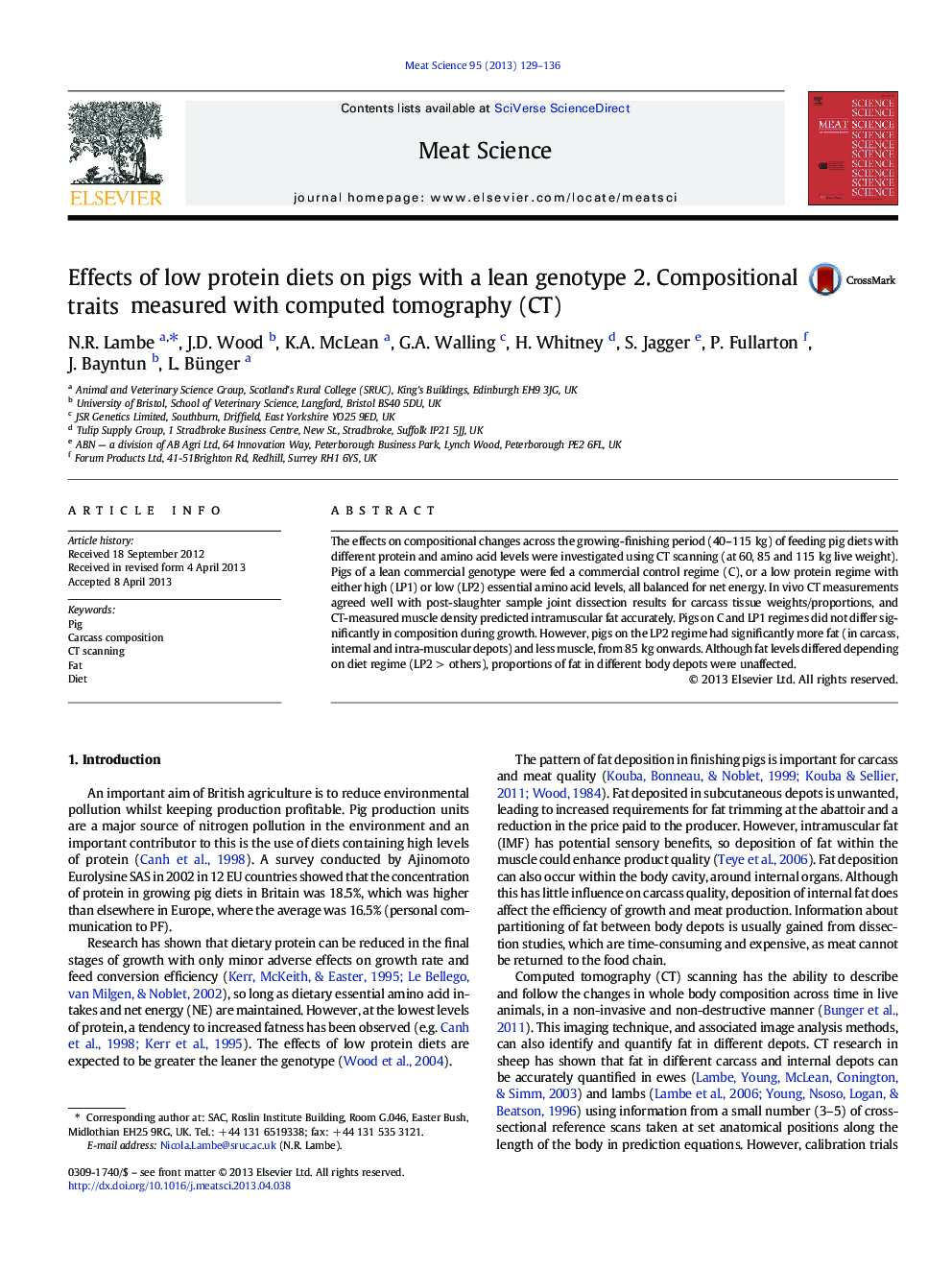| Article ID | Journal | Published Year | Pages | File Type |
|---|---|---|---|---|
| 5792327 | Meat Science | 2013 | 8 Pages |
â¢Lowering dietary protein led to more fat and less muscle in growing pigs.â¢Partitioning of fat between body depots was unaffected by lowering dietary protein.â¢Balancing essential amino acids in low protein diets maintained carcass quality.â¢In vivo CT scanning can accurately predict pig carcass tissue weights/ proportions.â¢CT-measured muscle density predicts intramuscular fat accurately in live pigs.
The effects on compositional changes across the growing-finishing period (40-115Â kg) of feeding pig diets with different protein and amino acid levels were investigated using CT scanning (at 60, 85 and 115Â kg live weight). Pigs of a lean commercial genotype were fed a commercial control regime (C), or a low protein regime with either high (LP1) or low (LP2) essential amino acid levels, all balanced for net energy. In vivo CT measurements agreed well with post-slaughter sample joint dissection results for carcass tissue weights/proportions, and CT-measured muscle density predicted intramuscular fat accurately. Pigs on C and LP1 regimes did not differ significantly in composition during growth. However, pigs on the LP2 regime had significantly more fat (in carcass, internal and intra-muscular depots) and less muscle, from 85Â kg onwards. Although fat levels differed depending on diet regime (LP2Â >Â others), proportions of fat in different body depots were unaffected.
